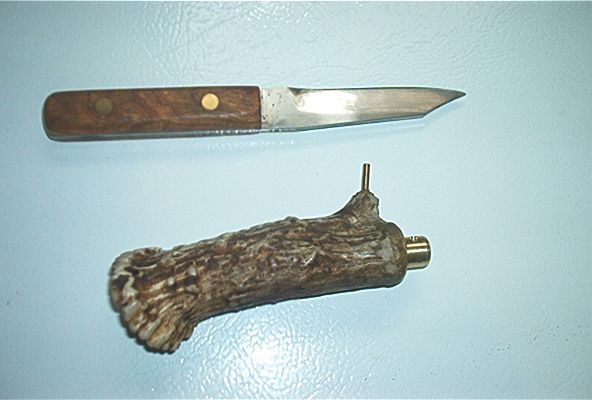Rick is the expert on all things horn (IMO) and I would follow his advice. One time, I didn't - thinking that if I heated the horn in boiling water, it would be pliable. All I ended up with was a smelly kitchen and a very clean horn. Then (as he recommends) I bough a 'fry daddy' deep fat fryer and some veggie oil at the local supermarket (I only use this oil to do horns - if you deep fat fry anything, I'd have one rig for the kitchen and one for the workshop.)
I have heard descriptions of folks using dry heat (heat gun or oven) but I've never tried it because I see it as a way to over heat the horn and ruin the project. With hot oil, I feel as though I have a good bit more control over what's going on, and I can get the horn out of the heat before it starts to delaminate. Short version: don't use the oven.
Rick recommends about 325 degrees, but I've had better luck going hotter - about 350 to 375 BUT you have to be super careful that you don't leave the horn in too long or it will start to delaminate, and this will ruin your project.
Other thoughts: be sure you use thick leather gloves, lose enough that you can snatch them off your hands in a big hurry if things start to go wrong. Pretty much the same protocol as you would use for pouring lead when you're running ball: long pants, long sleeves, no dangling neclaces, jewelry etc., good gloves, closed toed shoes, tie your hair back if necessary. You want to avoid allowing any water (as in, even a drop of sweat) to fall into the hot oil. While this will not be as bad as a similar drop of sweat into molten lead, it can still be quite dramatic, and not in a good way.
If you see bubbles start to come off your horn when it's in the oil, pull it out and see if it's become pliable. (Same thing if you see a sort of milky stuff coming out). Once you clamp it, give things plenty of time to set (I try to keep the horn in the former overnight). If you don't, the horn will try to return to its original shape. It's OK to do this in stages.
One more thought: be sure that you have the hole drilled before you put the horn in the oil ... an air bubble coming to the top could cause a splash- and- burn pretty quickly. I usually try pouring some powder (the same granulation as I i'll use in the horn) to make sure that there won't be any bridging, and the powder will flow nicely.
Horns are a boatload of fun to do ... you will make a horn for each of your rifles before you're done.
Good luck with your project, and remember, we love pictures!





